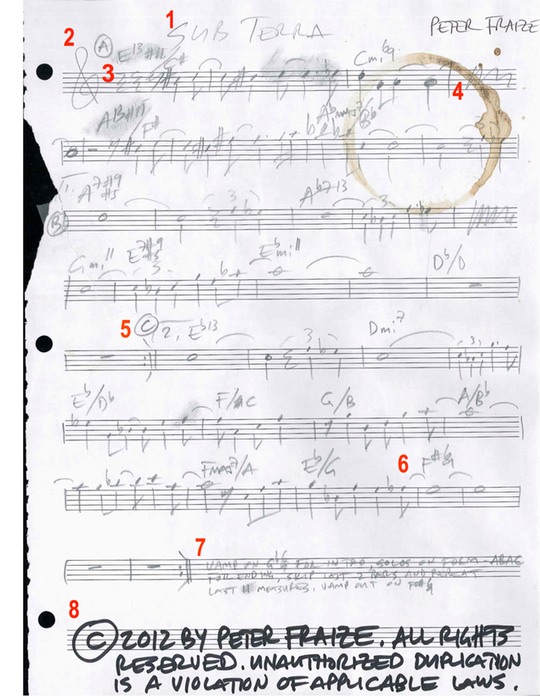
NOTES:
1. Write in ink. Charts written in pencil will disappear in dim lighting.
2. Indicate feel (swing, straight, etc.) and tempo (either bpm or slow, med, fast, etc.).
3. Include time and key (if applicable) signatures.
4. Plan your measures out so that you use the whole line. Dead or crossed-out space is confusing and distracting.
5. Whenever possible, put rehearsal letters, segnos, etc. at the left, or start, of a line (planning, again!).
6. Enharmonic agreement between melody note and chord symbol is usually best. In this example, the chord would be
better notated as Gb6/9 to agree with the Eb melody note.
7. Any written directions should be legible, concise, and in the appropriate spot on the chart (e.g. put instructions for
intro at the top).
8. While you should be proud of your tune, remember: the music matters most.
AND DON'T FORGET, NEATNESS COUNTS!
